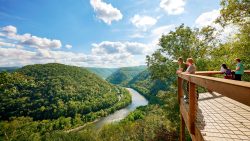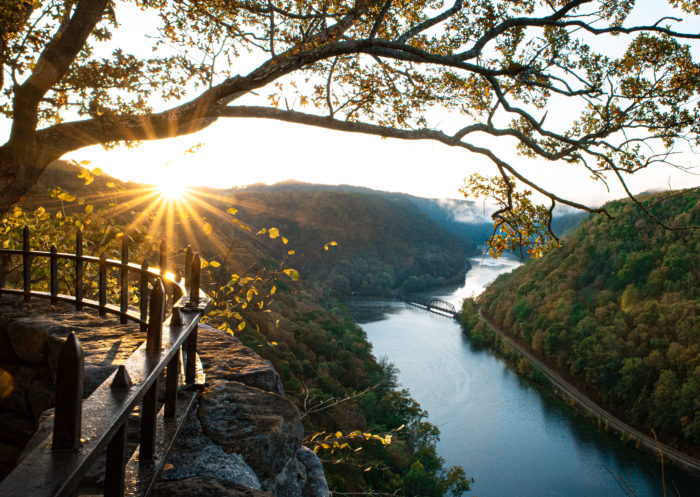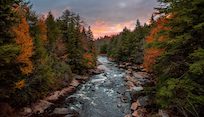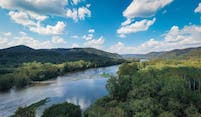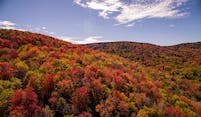Meet these birds up close during migration season
Meet some of the most dramatic and colorful birds in West Virginia.
From vast forests to isolated canyons, the Mountain State has some of the most ecologically rich terrain in America. Visit in fall and spring for a chance to find hawks, eagles and jeweled songbirds by the hundreds!
Autumn arrivals
Colder months cue the arrival of migrating birds. Starting in September, these striking animals journey south. West Virginia happens to lie directly along their vacation route.
If you time things just right, you’ll spot all sorts of passersby: bald eagles, broad-wing hawks, cerulean warblers and more!
Raptors of Monroe County
Since 1952, volunteers have scaled Peters Mountain and tallied migrating birds of prey as they swoop past. Hanging Rock Raptor Observatory isn’t an ordinary spot, either. Thanks to the high altitude, you can look eye-to-eye with eagles, falcons and hawks.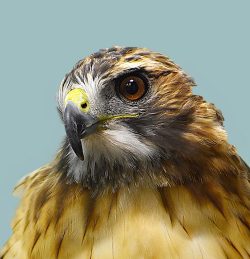
Perch yourself along the wooden railing and roost with fellow birders. Whether you’re a dedicated ornithologist or casual onlooker, you’re in for a show. Ospreys, northern harriers, Cooper’s hawks, kestrels and merlins come remarkably close. You might even spot a rare peregrine falcon.
The best time to spot these winged predators is in September, when raptors migrate in earnest. Sometimes, a thousand or more birds glide by during the day! But any trip to Hanging Rock— migration or no migration— is worth it. The stellar mountain views, crisp skies and serene quiet are unlike any other place in the state.
Warblers on the wing
Bright, chipper and quick, perching birds also travel through West Virginia. See them up close at the Allegheny Front Migration Observatory in Dolly Sods. The remote wilderness, with its heath barrens and bogs, attracts warblers and songbirds by the hundreds.
Common visitors include glittery black-throated green and black-throated blue warblers. You could also spot the natty Cape May warbler, immediately recognizable with its marigold head and striped body. Wilson’s warbler, an appealing lime-and-yellow fellow, likes to pop in, too.
If you’d like to see these animals up close, stop by the observatory from August to October. Volunteers and members of the Brooks Bird Club capture, band and record birds by the dozen. The daily catch varies, so who knows what their nets will snag.
Kanawha State Forest in Charleston is a prime birding zone, too. The 9,000-acre park is one of the best places to seek out the exotic cerulean warbler. Ranging from lavender to electric cobalt, this plump bird is relatively uncommon. Fortunately, West Virginia happens to attract some of the highest numbers of them in America.
Even if you miss out, Kanawha State Forest has plenty more birds. 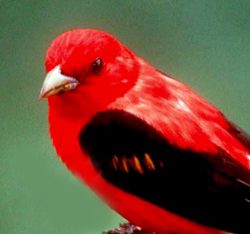 Bring your notebook and see if you can find all 19 wood warbler species! And if you’re really lucky, you’ll find scarlet and summer tanagers. These crimson animals are so vivid, they’ll take your breath away.
Bring your notebook and see if you can find all 19 wood warbler species! And if you’re really lucky, you’ll find scarlet and summer tanagers. These crimson animals are so vivid, they’ll take your breath away.
The New River Gorge isn’t just a famous whitewater destination. Rumpled mountains, active rivers and dense forests provide countless habitats for animals and plants alike. In fact, the Cornell Lab of Ornithology hails the Gorge as a “crucial stopover habitat for the continued survival” of birds like golden and blue-winged warblers and scarlet tanagers.
Pack your hiking boots and bird guide and go birding during autumn. Or, sign up for the Warbler Walk in early October at Wolf Creek Park, home of the New River Birding & Nature Center. Naturalists, authors and bird experts will escort you through trails and a wetland.
Early birds
When neotropical birds return from South and Central America in the spring, get ready for more binocular time!
Cabwaylingo State Forest in Wayne County is a favorite resting spot for summer tanagers, hooded warblers and red-eyed vireos. Even birders find the park attractive. The heavily forested park has rustic cabins, winding trails and lush plant life.
If you want more structure, 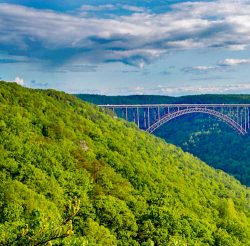 don’t miss the New River Birding & Nature Festival. This week-long event plants you in the thick of migration action. More than 100 bird species flock through the Gorge, and expert birders and naturalists will help you spot ‘em! What’s more, you can attend workshops, lectures, casual coffee gatherings and more.
don’t miss the New River Birding & Nature Festival. This week-long event plants you in the thick of migration action. More than 100 bird species flock through the Gorge, and expert birders and naturalists will help you spot ‘em! What’s more, you can attend workshops, lectures, casual coffee gatherings and more.
Even the state bird of Maryland vacations in West Virginia. Try searching for the striking Baltimore oriole at Hillcrest Wildlife Management Area, a rolling stretch of overgrown orchards and meadows. It’s hard not to get excited when you spot those orange, white and black feathers!
Which migratory bird is your favorite?
This post was last updated on March 2, 2022
